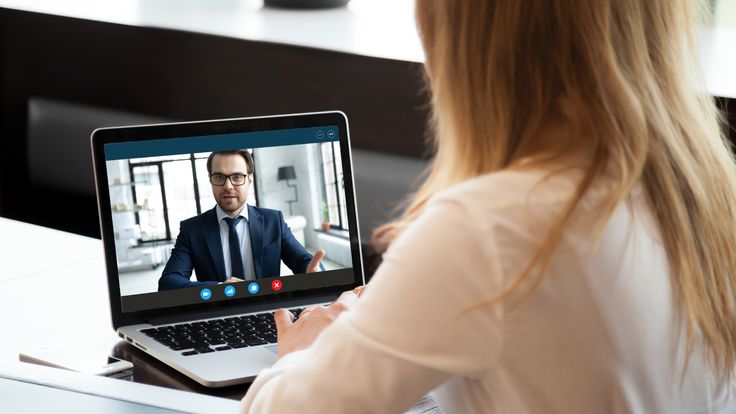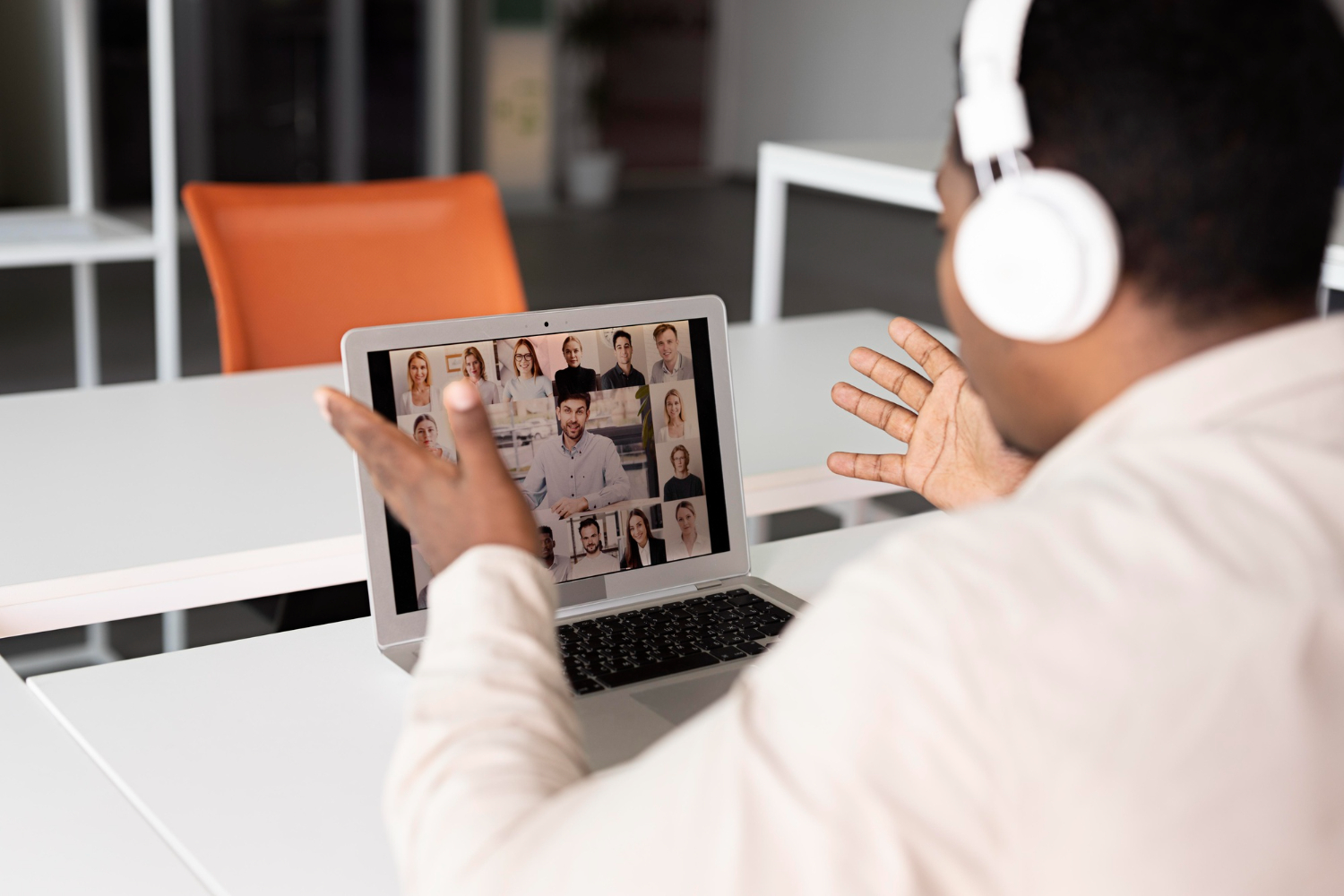The nature of remote interviews establishes equal degrees of interview anxiety when compared to physical sessions. After finishing your discussion, you may feel relieved, but your obligations to the employer truly kick off at this stage. Expressing your interest and addressing any unclear points can be done through a follow-up email after remote interviews.
Job seekers often hesitate to craft the perfect follow-up email during their job search. What should you say? How soon should you send it? What should your action be in case a follow-up email to a business letter yields no response?
The guide demonstrates why sending post-interview emails matters, explains how to select appropriate timeframes, and offers different content examples and template options for multiple situations.
Why You Should Send a Follow-Up Email After a Remote Interview.
Your chances for new employment opportunities will improve by sending a well-crafted follow-up email. Here’s why:
- The email demonstrates professionalism through appropriate management of interview times.
- Your eagerness to continue pursuing the position will set you apart from competing candidates.
- Employers who screen numerous candidates will remember applicants who utilize these follow-up techniques better. Your follow-up email reinforces your name with the employer, improving retention.
- This is the ideal chance to clarify points you may have overlooked during the interview.
- If the hiring process includes multiple rounds, building a good rapport with the interviewer becomes increasingly advantageous
Using a follow-up email as your strategic tool will enhance your chances of securing the position.
When to Send a Follow-Up Email
It is essential to consider the right time frame when performing follow-up procedures after a remote interview. Most candidates follow this typical timeline for their follow-up process.
- A thank-you email that illustrates your enthusiasm and sincere gratitude should be sent right after 24 hours.
- Use a courteous check-in email when one week passes without receiving an update.
- The last follow-up should be sent after the deadline mentioned by the employer if you have not received any response by then.
Your timing with follow-up emails will affect how you appear to the employer because waiting too long creates an impression of disinterest, but waiting too short a time may suggest aggressiveness. Achieving the correct equilibrium stands as the essential element.
What to Include in a Follow-Up Email
Create a brief but formal email that relates directly to the information you discussed during the remote interview process. Here’s what to include:
- Begin the email by using the interviewer’s name when expressing greetings.
- Expression of Gratitude: Thank them for their time and insight.
- Make reference to the essential lesson mentioned in the interview.
- The email should emphasize your strong interest in both the role and the organization.
- When fitting, ask about recruitment’s next steps and scheduling for hiring (optional).
- Complete the correspondence by adding your official name together with your full contact information.
We will examine particular email templates suitable for assorted follow-up situations in the following segments.
Follow-Up Email Templates
1. Thank-You Email (Sent Within 24 Hours)
Subject: Thank You for the Opportunity
Dear [Interviewer’s Name],
The message brings you my best wishes regarding your health status. I want to convey sincere appreciation for obtaining the chance to apply for the [Job Title] role at [Company Name]. Our discussion during the interview was quite enjoyable because I gained insight into both the team dynamics and the corporate environment.
The conversation about [specific topic] during our interview session fully rekindled my passion for working with [Company Name]. The relevant experience I bring would enable me to give strong support to your team according to my belief.
I hope you require any additional information to complete this process. I eagerly await your attention to hear about the following procedures.
Best regards,
[Your Name]
[Your Contact Information]
The format is both short and businesslike, alongside adequate gratitude which keeps a positive image strong.
2. Follow-Up Email If You Haven’t Heard Back (One Week Later)
Subject: Checking In on the Hiring Process
Dear [Interviewer’s Name],
I hope you’re doing well. I wish to check the status of my remote interview process for the [Job Title] position at [Company Name]. The interview dialogue was truly satisfying because I am enthusiastic about joining your team.
The time your team dedicates to each stage of recruitment for hiring decisions is highly appreciated by me. I need to know about the upcoming stages of the recruitment procedure. I am available to provide any necessary information that will help you make your decision.
I expect to receive your answer soon. My appreciation extends once more for the time dedicated to my application review.
Best regards,
[Your Name]
The formal approach maintains your position as a priority in the prospective client’s thoughts without being aggressive.
3. Follow-Up Email After the Stated Hiring Timeline Has Passed
Subject: Following Up on [Job Title] Position
Dear [Interviewer’s Name],
I hope your week is going well. I would like to check on my remote interview application for the [Job Title] role. You identified the hiring timeline for the [Job Title] role during our last meeting. I would also like to know if there are any new updates about the decision process.
The opening remains attractive to me and I strongly want to help your team right now. I’ll be available for any additional information needed during your decision-making process.
I look forward to your response as soon as possible. Thanks again for your time!
Best regards,
[Your Name]
Your interest remains visible to the hiring team through this gentle reminder which avoids any form of pressure.
4. Follow-Up Email If You Receive Another Job Offer
Subject: Follow-Up on [Job Title] Opportunity
Dear [Interviewer’s Name],
I hope you’re doing well. I am writing to check the status of my application for the [Job Title] role at [Company Name]. I remain deeply interested in this job opening, though I have received another job offer, which forces me to check your recruitment progress before committing to a choice.
Any information you can provide regarding this position would be very helpful. Our remote interview conversation was excellent, and I strongly want to join your team.
Your response is eagerly awaited since I appreciate your time commitment.
Best regards,
[Your Name]
This brief communication shows your need for a quick response as an opportunity exists but allows the company to make their decision promptly should they wish to employ you.
5. Follow-up email If You Didn’t Get the Job (But Want to Stay in Touch)
Subject: Thank You & Staying in Touch
Dear [Interviewer’s Name],
I deeply value the opportunity to apply for the [Job Title] position at [Company Name]. I appreciate your dedication to the selection process, even though I did not get the position.
Our talk about [recall the specific topic mentioned in our interview] was truly enjoyable, and I appreciate the activities occurring at [Company Name]. I want to stay connected for any positions that match my competencies and background at a later date. You may reach me anytime through LinkedIn or by direct contact.
I appreciate the chance you gave me and I will gladly connect with you in the future.
Best regards,
[Your Name]
By writing this polite email after non-selection the opportunities for future job prospects remain available.
Conclusion
The follow-up email you send will create an enduring impact after remote interviews. The timing alongside your email tone will affect how your follow-up emails are received when you thank interviewers monitor decisions or stay open for new opportunities.
Hiring managers value professional, enthusiastic candidates who demonstrate proactive behavior. By adapting these templates to suit your case, you will establish such credentials.
When persistent follow-up emails do not yield results, it becomes necessary to progress with your active job search. When you are prepared, a suitable job opening will emerge naturally.
Do you need assistance making your follow-up message more effective? Let me know!



